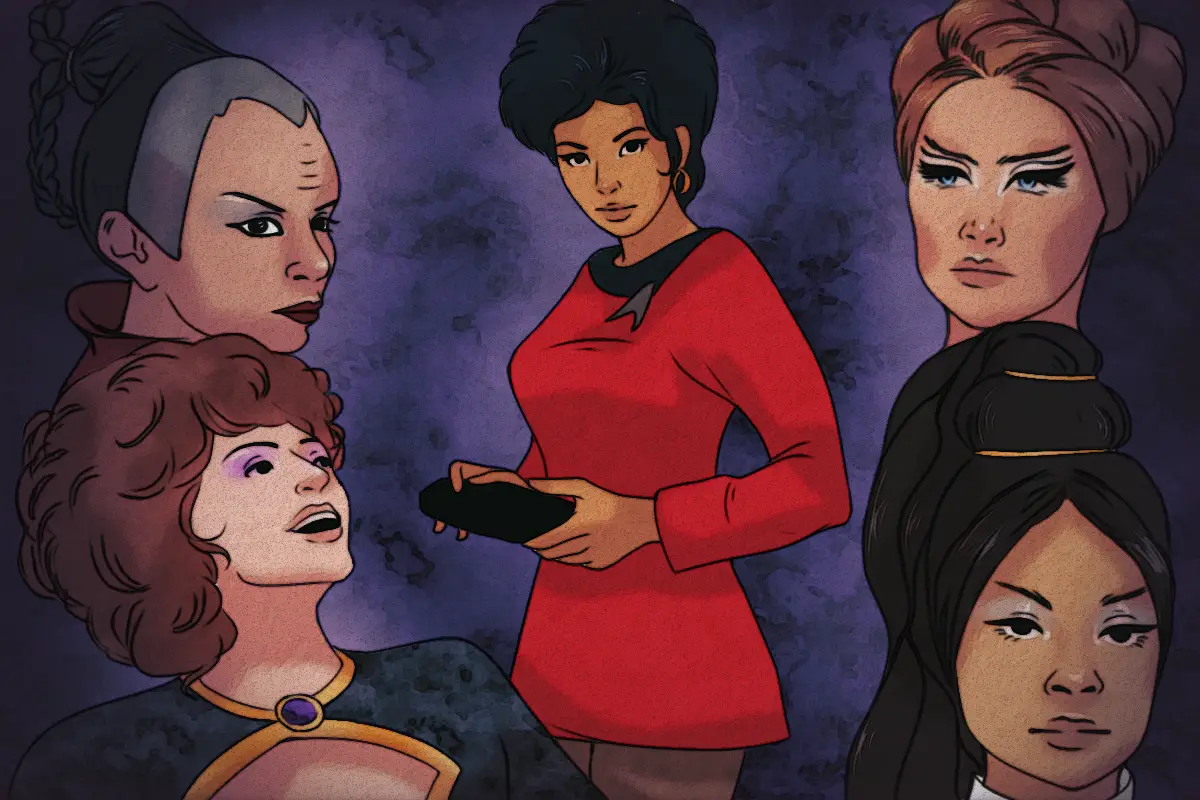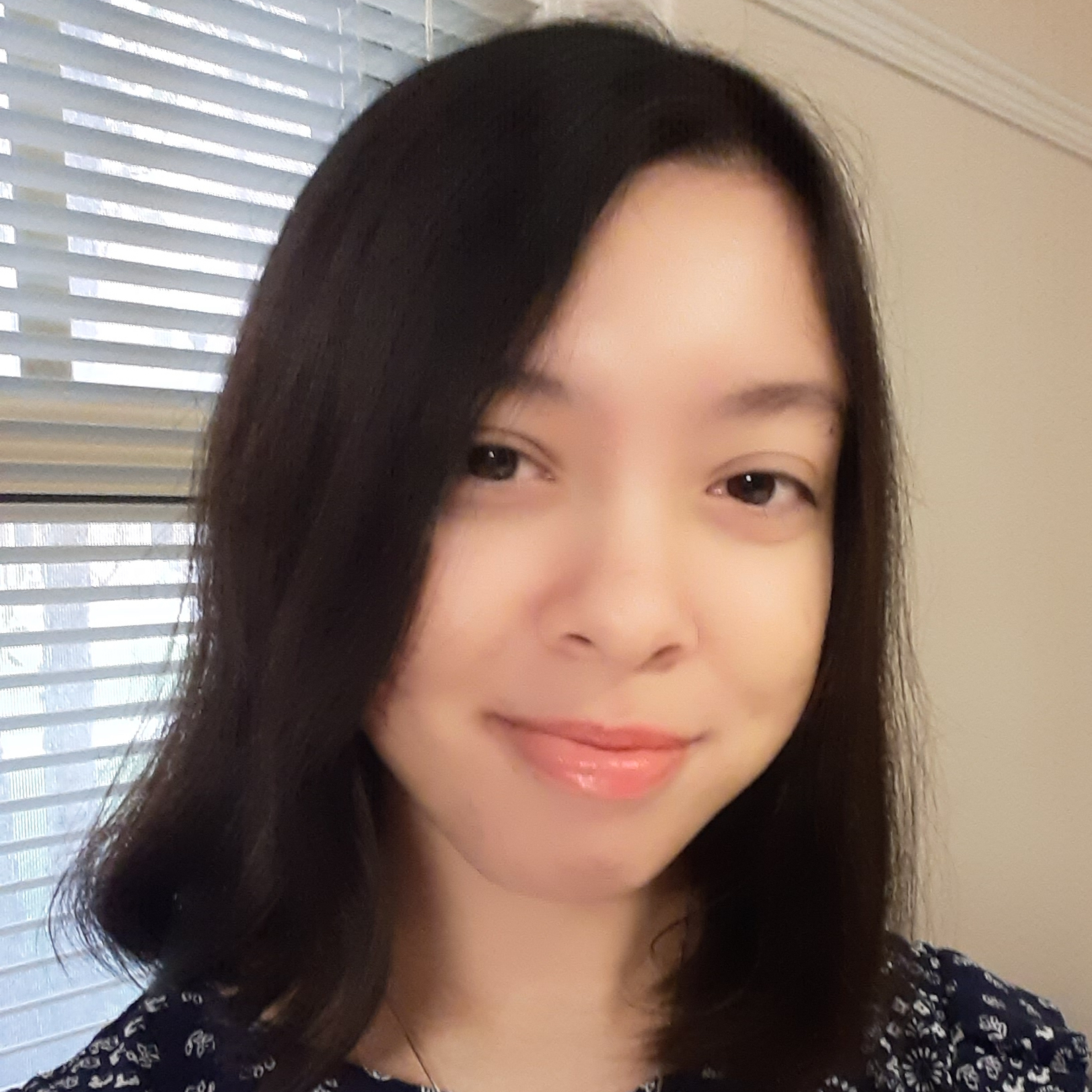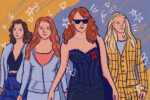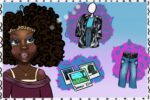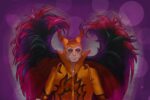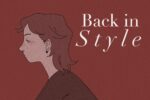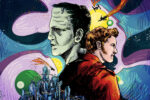The “Star Trek” franchise made its television debut in 1966 and painted a vivid picture of what life for humanity could look like in the twenty-third century. This first series only ran for three seasons, but the franchise has since amassed a total of twelve spinoff television programs over the span of almost six decades. Despite their futuristic settings and imaginative portrayals of advanced technologies, each “Star Trek” series clearly reflects the popular fashion and style trends of the decade in which it was produced.
Kicking off at the end of the 1960s, the short-lived “Original Series” or “TOS” serves as a time capsule for both early and late 60s style trends. These trends span from the “beehive” hairstyle, which first appeared in the year 1960, to the bright colors, crop tops and miniskirts that were more commonly seen in the mid to late portion of the decade. Crop tops were still considered a “fringe” style at the time and bright, multi-colored patterns would peak in popularity during the 1970s. In turn, those emerging trends were more often seen on the series’ alien characters rather than the main cast. On the other hand, the mini skirt and beehive were prominent looks among the Enterprise crew.
Created in 1960 by Margaret Vinci Heldt, the beehive hairstyle involves gathering the hair into a tall, rounded mound on top of the wearer’s head. The style was seen on numerous members of the Enterprise crew throughout the show’s run. Perhaps the most memorable beehive on “Star Trek” was that of season one’s Yeoman, Janice Rand. The height of Rand’s hair towered above the average beehive, and a basket weave pattern was woven into her hair to give it an extra, other-wordly touch.
Mini skirts were not only accepted on the USS Enterprise—they were the standard uniform for women in Starfleet. Iconic “Star Trek” characters, including Nichelle Nichols’ Lieutenant Uhura and Majel Barrett’s Nurse Chapel, wore solid-colored minidresses that bore the colors of their respective departments. Nurse Chapel was seen in a long-sleeved minidress that matched the powder-blue color of Dr. McCoy’s uniform shirt. Communications officer Lieutenant Uhura, who was often the only woman on the ship’s bridge, wore a red minidress of the same style.
The mini skirt was a very new trend when it first appeared on TOS. British designer Mary Quant is credited with popularizing the style, which she first observed as an emerging street fashion trend in London. Her above-the-knee skirts were first produced and sold around 1965 to 1966. Following the long skirts of the ’50s, mini skirts were daring and controversial. Despite the pushback from older folks who disliked the revealing new trend, bold modern women of the 60s enthusiastically embraced the style. As time went on, the mini skirts of “Star Trek” became controversial for a different reason. Contemporary critics have blasted the Starfleet minidresses as “sexist” and claimed it was demeaning to subject women to such skimpy uniforms while the men of Starfleet were almost exclusively seen in long-sleeved shirts and black pants. When asked about the revealing nature of her uniform, late star Nichelle Nichols explained that she had no complaints about her dress’ length, claiming “it was the era of the mini skirt. Everyone wore miniskirts!”
After TOS was canceled in 1969, the “Star Trek” franchise experienced a true revival in 1987 with the premiere of the hit series “Star Trek: The Next Generation.” Though this series began at the end of the 1980s, the fashion and style trends of the decade were still prominent throughout its early seasons. This was mainly seen in the hair department. Big hair is a staple of the 1980s, seen in both straight and curly forms. In “The Next Generation,” Dr. Beverly Crusher often had her straight, red hair teased for extra volume. Occasionally, her hair was curled a bit to add volume, but no character in “The Next Generation” did curls quite like Counsellor Deanna Troi.
The pursuit for big hair in the 1980s often led people down the path to the perm. From Bon Jovi to Barbra Streisand, many of the most popular celebrities of the day sported perms. Likely inspired by this 80s perm craze, actress Marina Sirtis was fitted with curly hairpieces to give Troia larger-than-life hairstyle with her signature, perm-like curls. Troi’s hair became so iconic that she continued to wear it as the show transitioned into the 1990s.
When it comes to the fashion and style choices in “Star Trek,” it’s important to not overlook makeup. The alien-like features dreamed up by prosthetic makeup artist Michael Westmore are often the subject of praise. However, the more subtle makeup touches of 90s “Star Trek” reflected the most popular makeup styles of the decade. Most notably, bold makeup with deep colors was seen across all three “Star Trek” series that aired during the 90s. Major Kira Nerys of “Star Trek: Deep Space Nine” and the 90s “Next Gen” character Ro Laren are prime examples. Both characters often sported red lipstick, a thin layer of dark eyeshadow and touches of blush on their cheeks to accompany the prosthetic ridges that were seen on the noses of the alien species they represented. Aside from their nose ridges, the two characters’ makeup was not unlike the makeup worn by Monica Geller of the 90s and 00s hit “Friends.”
Bold patterns were another massive trend in the 90s. Layering clothing and mixing different patterns together was a common sight during that decade. Though Starfleet uniforms followed standardized, minimalist designs, the non-Starfleet cast members of “Deep Space Nine” such as Jake Sisko and Quark were almost always wearing wild patterns. Quark sported his famously eccentric, colorful suits and Jake typically wore darker colors and more neutral tones; though the patterns he wore were equally eye-catching. In one hilarious tumblr post, a fan even compiled a gallery of Jake’s “bowling alley carpet” shirts.
Well into the 21st century, the “Star Trek” franchise lives on. Even current fashion and style trends can be seen in the most recent offerings from “Star Trek.” Seven of Nine—a character who made her debut in the early 2000s “Voyager” with a smooth, tight updo—can be seen in the more recent “Star Trek: Picard” with a loose, wavy hairstyle commonly seen in so many other current television shows. It’s hard to imagine what other fashion trends might become synonymous with our present era, but one thing’s for certain: a few decades from now, we can look back at 2020s “Star Trek” and find out.


